Clancy Tucker's Blog, page 197
February 10, 2017
11 February 2017 - COMMON GRAMMAR MISTAKES

COMMON GRAMMAR MISTAKES
G'day folks,
Here are a few more common words that trick us up, courtesy of Jon Gingerich.
Moot
Contrary to common misuse, “moot” doesn’t imply something is superfluous. It means a subject is disputable or open to discussion. e.g., The idea that commercial zoning should be allowed in the residential neighborhood was a moot point for the council.

Continual and Continuous
They’re similar, but there’s a difference. “Continual” means something that's always occurring, with obvious lapses in time. “Continuous” means something continues without any stops or gaps in between. e.g., The continual music next door made it the worst night of studying ever. e.g., Her continuous talking prevented him from concentrating.

Envy and Jealousy The word “envy” implies a longing for someone else’s good fortunes. “Jealousy” is far more nefarious. It’s a fear of rivalry, often present in sexual situations. “Envy” is when you covet your friend’s good looks. “Jealousy” is what happens when your significant other swoons over your good-looking friend.

Nor
“Nor” expresses a negative condition. It literally means "and not." You’re obligated to use the “nor” form if your sentence expresses a negative and follows it with another negative condition. “Neither the men nor the women were drunk” is a correct sentence because “nor” expresses that the women held the same negative condition as the men. The old rule is that “nor” typically follows “neither,” and “or” follows “either.” However, if neither “either” nor “neither” is used in a sentence, you should use “nor” to express a second negative, as long as the second negative is a verb. If the second negative is a noun, adjective, or adverb, you would use “or,” because the initial negative transfers to all conditions. e.g., He won’t eat broccoli or asparagus.The negative condition expressing the first noun (broccoli) is also used for the second (asparagus).

Clancy's comment: I hope these have helped you writers. Maybe print them off and plaster them to your office wall.
I'm ...


Published on February 10, 2017 12:10
February 9, 2017
10 February 2017 - Facts About the Black Rhinoceros
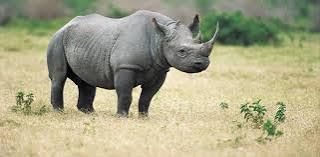
FACTS ABOUT THEBLACK RHINOCEROSG'day folks,
Here are some interesting facts about one hellova mean-looking animal. The black rhinoceros or hook-lipped rhinoceros is a species of rhinoceros, native to eastern and southern Africa including Botswana, Kenya, Malawi, Mozambique, Namibia, South Africa, Swaziland, Tanzania, Zambia, and Zimbabwe.
The black rhinoceros is in fact grey in colour. They often assume the colour of the local soil in which they wallow. The black rhino is also called the Hook-lipped Rhinoceros.Related species are the white rhino, the large Indian rhino, the smaller Javan rhino and the Sumatran rhino.It is a solitary animal, active mainly at night.The black rhino is considered the most aggressive species of its family and, despite its massive bulk, they can charge at great speeds of 50km per hour at an unwary observer. They are fully capable of killing a human being and can even cause serious damage to a car. It rarely presses home such attacks, preferring instead to browse the low trees of its wooded habitat, or simply to doze in the cool shade.Rhinos have specialised upper lips, which is prehensile (capable of grasping) and are adapted for feeding from shrubs which it strips the leaves and shoots from.Due to the structure of their mouths, the rhino cannot easily graze compared to other animals, but they tear up and eat clumps of long grasses instead.The oxpecker bird is a welcome passenger to the rhino as it picks parasitic ticks out of the rhino’s skin. The birds provide another valuable warning service to the rhino as it is known to screech loudly when humans approach.A rhino was once seen wallowing with six turtles picking out ticks as they climbed over her body.Since it needs to drink once a day, the rhino stays within 5km of water. In very dry conditions, it can dig for water using its forefeet.As it cannot sweat, the rhino, similar to an elephant, will roll in mud or dust to keep it cool and give it a protective coating of mud against biting insects.They are territorial animals, using scent as a signal, spraying urine along paths and using communal dung heaps to mark their territory. It scrapes with its hind feet after defecating to collect and carry the sent away with it.They mate at any time of the year. The male rhino has a breeding ritual to attract a female. He will brush his horn over the ground, charge at bushes, rushes back and forth and frequently sprays urine. The females are known to reject the males aggressively at first until she succumbs.Gestation is long at 15 months and they produce 1 calf. Young rhinos can walk 10 minutes after they are born. However, the mother will keep it hidden for a couple of weeks in fear that it may get trampled upon.Black rhinos stop growing when about seven years old. The female can breed before this, but in the wild she will have just one calf every two to five years.A rhino has very few predators, although a lion may try to take a calf. A spotted hyena is a more serious threat, but man is the deadliest of all.Sadly they have been threatened almost to extinction due to hunting. Hunters prize the rhino’s magnificent horn, which is valued for ornamental and medicinal use.Some rhinos have been de-horned to make them worthless to poachers.Recent conservation has been successful but there is a lot more work needed to bring back the Rhinos population to what it once was and to avoid it being lost forever.

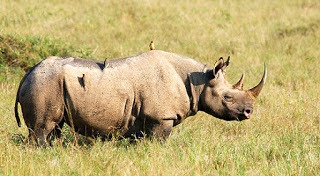

Clancy's comment: I would not wish to tangle with one.
I'm ...
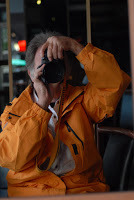

Published on February 09, 2017 12:01
February 8, 2017
9 February 2017 - SIR ISAAC NEWTON

SIR ISAAC NEWTON
G'day folks,
Now, here is one smart character.
Sir Isaac Newton was born on Christmas Day, in 1643, to a relatively poor farming family. His father died 3 months before he was born. His mother later remarried, but her second husband did not get on with Isaac; leading to friction between Isaac and his parents. The young Isaac attended school at King’s School, Grantham in Lincolnshire (where his signature is still inscribed in the walls.. Isaac was one of the top students, but before completing his studies his mother withdrew him from school, so Isaac could work as a farmer. It was only through the intervention of the headmaster that Isaac was able to return to finish his studies; he passed his final exams with very good results, and was able to go to Trinity College, Cambridge.

At Cambridge he was able to pursue his interests in mathematics, science and physics. At the time the prevailing education was based on Aristotle, but Isaac was more interested in modern mathematicians such as Rene Descartes. Isaac Newton had a prodigious capacity to consider mathematical problems, and then focus on them until he had solved the mystery behind them. His one pointed nature led him to, at times, be detached from the world. For example, he had little time for women. An early teenage romance came to nothing, and he remained single throughout his life.
Sir Isaac Newton, has been referred to as one of the greatest genius’ of history. His mathematical and scientific achievements give credence to such a view. Amongst his many accomplishments in the field of science include:
Developing a theory of Calculus. Unfortunately, at the same time as Newton, calculus was being developed by Leibinz. When Leibinz published his results, there was a bitter feud between the two men, with Newton claiming plagiarism. This bitter feud lasted until Leibinz death in 1713, it also extended between British mathematicians and the continent.

ACHIEVEMENTS:
eneralized binomial theorem
Newton’s identities,
Newton’s method,
classified cubic plane curves (polynomials of degree three in two variables),
Substantial contributions to the theory of finite differences,
Use of fractional indices
Used geometry to derive solutions to Diophantine equations.
Used power series with confidence and to revert power series.
Discovered a new formula for pi.
The most popular anecdote about Sir Isaac Newton is the story of how the theory of gravitation came to him, after being hit on the head with a falling apple. In reality, Newton and his friends may have exaggerated this story. Nevertheless, it is quite likely that seeing apples fall from trees may have influenced his theories of gravity.
As well as being a scientist, Newton actually spent more time investigating religious issues. He read the Bible daily, believing it to be the word of God. Nevertheless, he was not satisfied with the Christian interpretations of the Bible. For example, he rejected the philosophy of the Holy Trinity, his beliefs were closer to the Christian beliefs in Arainism (basically there was a difference between Jesus Christ and God)
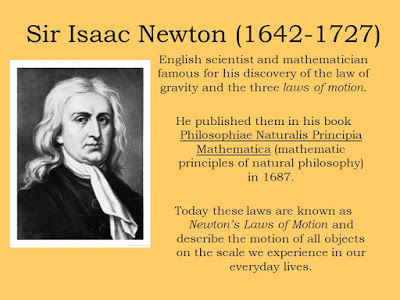
Newton was fascinated with the early Church and also the last chapter of the Bible Revelations. He spent many hours poring over the Bible, trying to find the secret Bible Code. He was rumoured to be a Rosicrucian. However, the religious belief’s that Newton held could have caused serious embarrassment at the time. Because of this he kept his views hidden, almost to the point of obsession. This desire for secrecy seemed to be part of his nature. It was only on his death that his papers were opened up. The bishop who first opened Newton’s box, actually found them too shocking for public release, therefore, they were kept closed for many more years.
Newton was also interested in alchemy. He experimented on many objects, using a lot of Mercury. Very high levels of mercury in his blood stream may have contributed to his early death and irregularities in later life.
Newton was made member of the Royal Society in 1703. He was also given the job of Master of Mint in 1717. He took this job seriously and unofficially was responsible for moving England from the silver standard to the gold standard.

Newton was an extraordinary polymath; the universe simply fascinated him. He sought to discover the hidden and outer mysteries of life. With his sharp intellect and powers of concentration, he was able to contribute to tremendous developments in many areas of science. He was a unique individual.

Clancy's comment: He was obviously a deep thinker.
I'm ...
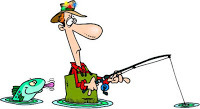
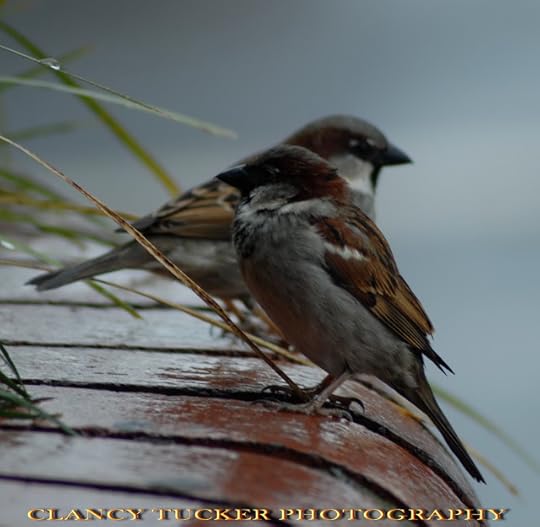
Published on February 08, 2017 12:12
February 7, 2017
8 February 2017 - THE ANACONDA
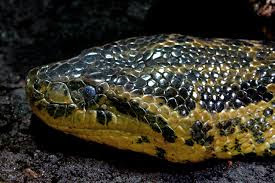
THE ANACONDA
G'day folks,
Welcome to some gruesome facts about a whopping big snake. Anacondas are the heaviest snakes in the world. They live in water and can often slither unnoticed along the riverbed.
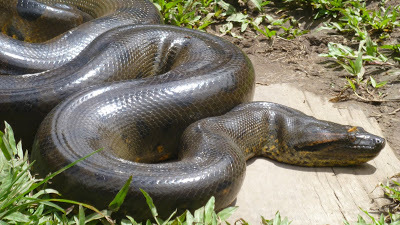
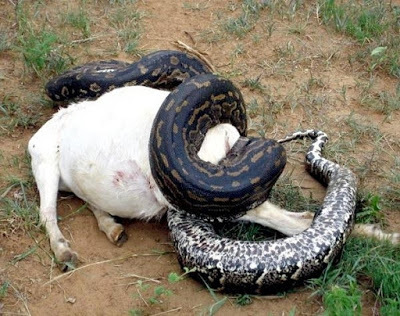
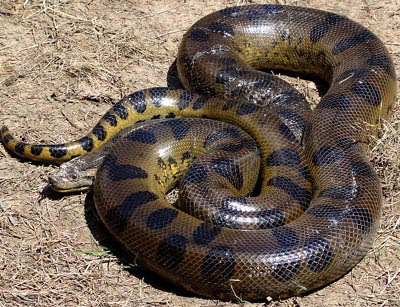
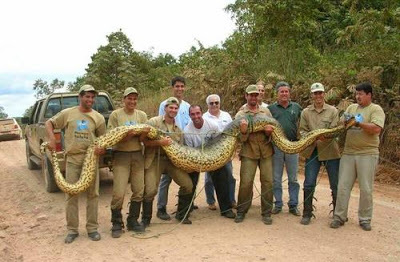
Amazing Facts About the Anaconda
There are four different species of anaconda: Green, Bolivian, Yellow and Dark-Spotted Anacondas.The largest species is the Green Anaconda which can grow up to 30ft (9m) in length and weigh up to 550lbs (250kg)!They are found in the Amazon Rainforest and usually inhabit marshes, swamps and slow moving streams.Female anacondas are significantly larger than males.Anacondas are not venomous and usually kill by constriction (wrapping around and squeezing their prey until they can no longer breath).They are part of the boa constrictor family.Once they have reached their adult size Anacondas can take on wild pigs, caiman, capybara and even jaguars!Their jaws stretch so they can swallow their prey whole. After a large meal they do not need to eat for weeks.They do not lay eggs but actually give birth to live young.

Clancy's comment: Awesome, eh? I have met a few two-legged anacondas in life.
I'm ...


Published on February 07, 2017 12:26
February 6, 2017
7 February 2017 - THE AMAZON RIVER DOLPHIN
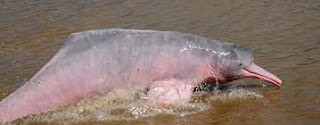
THE AMAZON RIVER DOLPHIN
G'day folks,
Welcome to some facts about an interesting creature. The Amazon river dolphin, also known as the boto, bufeo or pink river dolphin, is a species of toothed whale classified in the family Iniidae. Three subspecies are currently recognized: I. g. geoffrensis, I. g. boliviensis and I. g. humboldtiana.
The Amazon River Dolphin flushes a brighter shade of pink when it is surprised or excited. Just like a human blushing!
Amazing Facts About the Amazon River DolphinThe Amazon River Dolphin is also known as the boto or pink river dolphin due to its distinctive colouring. It is one of only seven species of freshwater cetaceans.Amazon River Dolphins are only distantly related to saltwater dolphins. They have adapted to their surroundings with larger snouts with bristle hairs on the end, specially adapted for river-bottom feeding. Unlike their saltwater relatives, Amazon River Dolphins have a flexible neck and can move their head left and right due to unfused cervical vertebrae.The dolphins do not have a dorsal fin like other dolphin species, instead they have a long dorsal ridge.There are three subspecies of the Amazon River Dolphin present in different regions of South America. The I.g. Humboldtiana is in the Orinoco basin in Colombia and Venezuela, g. geoffrensis in the Amazon river system of Peru, Brazil and Ecuador and the I.g. boliviensis in Bolivia.The Amazon River Dolphin’s colouration is highly variable, affected by age and water clarity. Colours range from white/grey with a pink dorsal ridge and lighter below to a vivid pink! The sun’s rays make the dolphins lose their pink pigmentation so the darker the water, the more pink they will be.When they are excited or surprised, the dolphins will flush more pink, similar to blushing in people!Amazon River Dolphins are the only species of toothed whales to have different types of teeth in their jaw. Their back teeth are designed for crushing whereas their front teeth are pointy.The swollen part of a dolphin’s head, the equivalent of their forehead, is called a blowhole is normally in the centre of the melon. Inside the melon, there are small air sacs which are used to make click vibrations. The melon focuses its ‘beam’ of clicks towards an object of interest, the sound then travels back providing the dolphin with information on the size, type and speed of the object. This technique is called echolocation and key for hunting prey. Boat engines and motors cause sound pollution which can distort the dolphin’s navigation system. An increase in river traffic threatens the Amazon River Dolphins as they are curious animals and some may approach boats where they can be easily injured by propellers.Amazon River Dolphins are the largest of the river dolphins, they can grow up to 8ft but are usually smaller.They can paddle forward with one flipper and backward with the other allowing them to manoeuvre more easily during river floods. The dolphins will travel into flooded areas of land; their flexibility allows them to dodge trees easily.Amazon River Dolphins are often seen swimming on their backs, this thought to be due to their ‘chubby cheeks’ which obstruct their downward vision.Dolphins are very intelligent animals; the Amazon River Dolphin’s brain capacity is 40% larger than humans! They are considered the most intelligent of the river dolphins.Amazon River Dolphins were spared from human persecution as it was thought they had special powers, however the dolphins are increasingly being viewed as unwanted competitors for fish. People will try and scare or kill the dolphins to prevent them taking fish.Except for humans, the Amazon River Dolphin does not have many predators, however, caiman, jaguars and anacondas have been known to catch dolphins on occasions!Mercury pollution is major problem for the Bolivian river dolphin from small-scale mining runoff. Catfish, a key food resource for the dolphins, are bottom-dwellers and are greatly affected by changes in mercury levels in water.Amazon River Dolphins are friendly and there are many stories among tribes in the Amazon of people being pushed ashore by dolphins when they were in the water!
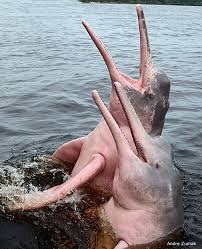
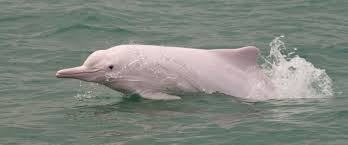


Clancy's comment: Nature never ceases to amaze me.
I'm ...


Published on February 06, 2017 12:16
February 5, 2017
6 February 2017 - TOP QUOTES TO PONDER

TOP QUOTES TO PONDER
G'day folks,
Check out these quotes to crank you up for the day.




















Clancy's comment: There are some good ones here today.
I'm ...
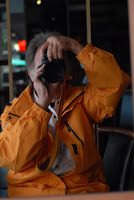

Published on February 05, 2017 13:22
February 4, 2017
5 February 2017 - WHOSE Vs. WHO’S

WHOSE Vs. WHO’S
G'day folks,
Here is another confusing pair of words.Whose and who’s are commonly confused terms because they sound alike. Luckily, the distinction between them is relatively straightforward. Who’sis a contraction of who isor who has, and whose is a possessive pronoun.
Let’s take a look at a classic comedy sketch for some grammar guidance. In Abbott and Costello’s famous “Who’s on First” bit, Abbott explains to Costello that the names of baseball players on the team are Who, What, and I Don’t Know. This, naturally, causes confusion, which leads to Costello asking “Who’s on first?” repeatedly. Poor Costello’s frustration rises each time Abbott confirms that, yes, “Who [the baseball player] is on first.”
Why is this sketch called “Who’son First” and not “Whoseon First?” The answer is simple: As we mentioned above, who’s is a contraction of who is or who has. When Abbott says “Who’s on first,” it is equivalent to “Who ison first.” In fact, at some points during the sketch, he uses these two statements interchangeably. Rarely, when we’re talking about who, is it a proper noun (unless it’s Doctor Who); usually whois a pronoun. This, not to spoil the joke, is where the comedy comes from.

Returning to the grammar question of the hour, whoseis a possessive pronoun. How do you use a possessive pronoun? Imagine it’s raining and you grab an umbrella, only to realize later that it isn’t yours. You might ask your friend “Whose umbrella is this?” In other words, you’re asking who owns the umbrella. Whosecan refer to things in addition to people. For example, you can say “I’m thinking of a word whose meaning escapes me.” Some people prefer to use of which in these cases, though this often has the effect of making the sentence more clunky. You could rephrase the above with “I’m thinking of a word of which the meaning escapes me.” Both are technically correct. In these situations, it’s best to go with the one that sounds most natural.

Clancy's comment: I hope this has helped some of you. If you are like me, every bit helps.
I'm ...


Published on February 04, 2017 14:05
February 3, 2017
4 February 2017 - THE MAYANS
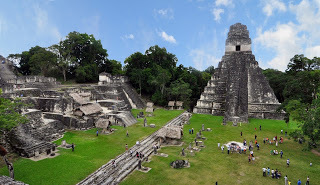
THE MAYANSG'day folks,
The Maya are an indigenous people of Mexico and Central America who have continuously inhabited the lands comprising modern-day Yucatan, Quintana Roo, Campeche, Tabasco, and Chiapas in Mexico, and southward through Guatemala, Belize, El Salvador and Honduras.

The ancient Maya, whose early settlements date back to about 2,000 B.C., lived in present-day southern Mexico and northern Central America. As a civilization, they are recognized for their sophisticated calendar systems and hieroglyphic writing as well as their achievements in areas such as agriculture and architecture.
Around 250 A.D., the Maya entered what’s now known as the Classic Period, an era in which they built flourishing cities with temples and palaces, and population size peaked. However, by the end of the Classic Period, around 900 A.D., almost all of the major cities in what was then the heart of Maya civilization—the southern lowlands region, in present-day northern Guatemala and neighboring portions of Mexico, Belize and Honduras—had been abandoned. The collapse didn’t happen all at once; instead, it’s believed to have occurred over time from place to place, between about the late 8th and 925. Exactly why any of this transpired, though, is a mystery.

Scholars have suggested a number of potential reasons for the downfall of Maya civilization in the southern lowlands, including overpopulation, environmental degradation, warfare, shifting trade routes and extended drought. Rather than a single cause, it’s likely that a complex combination of factors was behind the collapse. What is certain is that the Mayans didn’t disappear in the aftermath of the collapse. Instead, cities in the northern lowlands region, such as Chichen Itza and later Mayapan (both located in present-day Yucatan, Mexico), rose to prominence. The Maya also established cities in the highlands region, such as Q’umarkaj (in present-day Guatemala).

The Spanish conquistadores arrived in the early 1500s and the last independent Mayan city, Nojpeten (in present-day Guatemala), fell to Spanish troops in 1697. The ancient cities were largely forgotten until the 19th century, when their ruins started to be uncovered by explorers and archeologists. Today, the Maya continue to reside in their ancestral homelands in Mexico, Guatemala, Belize, Honduras and El Salvador.

Clancy's comment: I'm always amazed at how sophisticated some of these cultures were.
I'm ...


Published on February 03, 2017 12:12
February 2, 2017
3 February 2017 - THE ARCTIC FOX

THE ARCTIC FOX
G'day folks,
The Arctic fox, also known as the white fox, polar fox, or snow fox, is a small fox native to the Arctic regions of the Northern Hemisphere and common throughout the Arctic tundra biome. It is well adapted to living in cold environments, and can survive in temperatures as low as -50C (-58F).
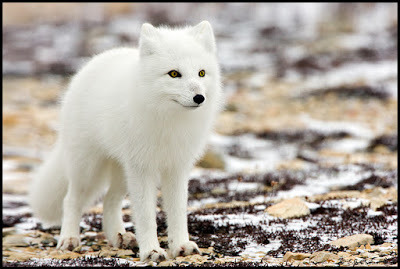
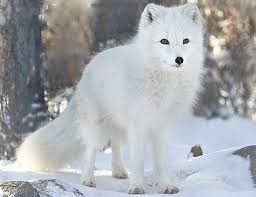
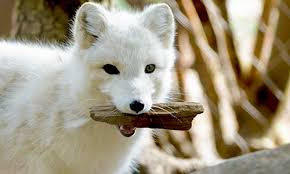
Amazing Facts About the Arctic FoxThe Arctic Fox lives on the arctic tundra in some of the harshest conditions on earth. Temperatures can fall as low as -50C (-58F)! They have the best insulating fur in the whole of the animal kingdom.Adapted to survive in harsh conditions, arctic foxes have a round compact body, short legs, short ears and small muzzles, reducing the surface area exposed to the cold air. Their deep, thick fur helps to maintain a consistent body temperature.Alopex lagopus, arctic foxes scientific name means ‘hare-footed fox’ as even their paws are covered in fur, similarly to a hares. This reduces heat-loss and enables the foxes to walk better on ice.Their tail or brush, is around 13” long, used to aid balance but also acts as a blanket when they are sleeping. Arctic foxes can curl their tail around their face to protect their nose from the cold.An arctic fox’s fur changes dependent on the season, it is white in summer to blend into the snow, preventing prey from seeing the fox. They shed in spring to reveal grey fur underneath. The shade of their summer fur is dependent on where the foxes live – those which live in areas such as a rocky shore line will be brown in order to blend in.The Lemming, a small rodent, is one of the arctic fox’s main prey, so much so that populations of fox can fluctuate dependent on lemming numbers.When hunting in winter, arctic foxes incredible hearing allows them to locate the precise location of their prey under the snow. They will leap up in the air and pounce down into the snow on the prey below.Highly opportunistic animals, arctic foxes will sometimes follow polar bears, scavenging their leftovers.Carnivores and scavengers, arctic foxes may even catch seal pups on occasion. They have been known to eat berries in summer months.In Iceland, the arctic fox is the only native land mammal.Arctic foxes mate for life, with both parents helping to raise the pups. Litter sizes range from 6-14 with an average litter size of 11 which is the largest litter size recorded for any wild mammal!They live in burrows, which can be hundreds of years old, passed down through generations of foxes.The arctic fox is very mobile. They will travel large distances across land and sea ice in search of food.Climate change is seriously affecting the Arctic, temperatures are rising at twice the rate of the rest of the world causing changes such as reduced sea ice, rising sea levels and melting permafrost. This will affect arctic foxes, changing their habitats, prey availability and is linked to the expansion of the red fox northward. Red foxes are bigger and more dominant than the arctic fox, they will even kill arctic foxes in areas where territories overlap.
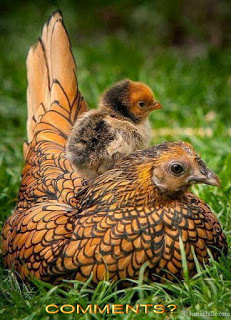
Clancy's comment: Very cute, eh? Amazing how they can live in such cold conditions.
I'm ...


Published on February 02, 2017 11:55
February 1, 2017
2 February 2017 - JOHN FLYNN
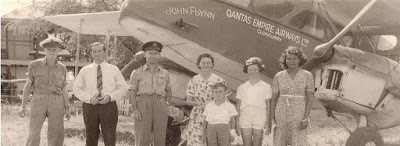
JOHN FLYNNG'day folks,
John Flynn OBE was an Australian Presbyterian minister who founded what became the Royal Flying Doctor Service, the world's first air ambulance.
John Flynn (1880-1951), Presbyterian minister, founder and superintendent of the Australian Inland Mission of the Presbyterian Church of Australia, was born on 25 November 1880 at Moliagul, Victoria, second son of Thomas Eugene Flynn, schoolteacher, and his wife Rosetta Forsyth, née Lester. Educated at Snake Valley, Sunshine and Braybrook primary schools, he matriculated from University High School, Carlton, aged 18. Unable to finance a university course, he became a pupil-teacher with the Victorian Education Department and developed interests in photography and first aid. In 1903 he began training for the ministry through an extra-mural course for 'student lay pastors', serving meanwhile in pioneering districts of Beech Forest and Buchan.
His next four years in theological college were interspersed with two periods on a shearers' mission and the publication of his Bushman's Companion (1910).
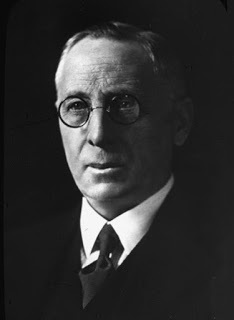
On completion of his studies for ordination Flynn volunteered for appointment in 1911 to the Smith of Dunesk Mission in the northern Flinders Ranges, South Australia. This parish extended to the rail head at Oodnadatta where the mission had placed a nursing sister and planned a nursing hostel; under Flynn's practical assistance, it was open on 11 December. Next year Flynn surveyed the Northern Territory and on receiving his two long and detailed reports, one on the needs of Aboriginals and one on the needs of white settlers, the Presbyterian General Assembly that year appointed him superintendent of its Australian Inland Mission, which, in principle, it established at the same meeting. The South Australian, Western Australian and Queensland assemblies transferred their remote areas adjoining the Northern Territory to Flynn's care, and his new charter was initiated at Oodnadatta Nursing Hostel. The mission he was to direct for another thirty-nine years commenced operation with one nursing sister, one padre, a nursing hostel and five camels. It began as it continued 'without preference for nationality or creed', to become a great mantle of safety composed of a network of nursing hostels and hospitals each in close association with a patrol padre.
It took another seventeen years before Flynn's caring service to remote homesteads and communities was completed with the establishment of the A.I.M. Aerial Medical Service at Cloncurry in 1928 and Alfred Traeger's invention of the pedal radio in 1929. Flynn's writings in the Inlander indicate that this fourfold concept was his goal almost from the beginning. In his understanding of community development, he was ahead of his time, for the service he envisaged was to be a framework within which outback communities might 'structure and co-ordinate' their own 'canopy' of safety. By 1918, although World War I impeded development, in addition to the first nursing hostel and patrol based on Oodnadatta Flynn had established patrols based on Port Hedland and Broome in Western Australia, Pine Creek in the Northern Territory and Cloncurry in Queensland. He had also appointed nursing sisters to Port Hedland and Halls Creek in Western Australia and Maranboy and Alice Springs in the Northern Territory, though the latter appointment soon lapsed because of lack of a suitable building. Five years later, Flynn had twenty-three nursing sisters in the field.
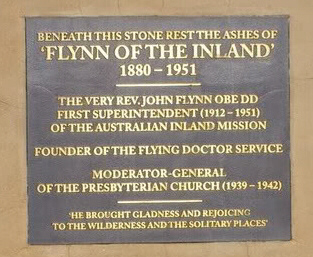
The nursing hostel designs were usually prepared by Flynn himself after consultation with architects, engineers and local people to ensure that the design was suitable to climatic conditions and available building material. His design for the Alice Springs hostel, published in 1920 in the Inlander, illustrates his research, having ducted aircooling via a tunnel under the ground floor where wet bags filtered the dust and cooled the air drawn by convection through the wards to the lantern roof. This massive stone building with wide verandahs was completed in 1926.
Between 1913 and 1927 Flynn's magazine, the Inlander, led his battle for a 'brighter bush'. His photographs, documents, statistics, maps and articles publicized the needs of the people and northern Australia's potential for development, which he argued could only be effected by providing security for women and children. He did not overlook Aboriginals, and devoted the first issue of the 1915 Inlander to photographs and stories of the plight of the fringe-dwellers in particular: 'A blot on Australia is shown on our frontispiece … There is no call for sensation. Sensation is too cheap. We need action'. He confessed that everyone was ignorant of how to help but that 'it is up to us to educate ourselves and mend our ways'. He claimed that Aboriginals were neither incompetent nor 'beneath the practice of self-help' and noted also the care that they gave their old men. He continued: 'We who so cheerfully sent a cheque for £100,000 to Belgium to help a people pushed out of their own inheritance by foreigners—surely we must just as cheerfully do something for those whom we clean-handed people have dispossessed in the interests of superior culture'.
There were few in that time who were as outspoken or perceptive as Flynn on this subject—a fact rarely recognized by either Church or public. Within his own Church, another department was responsible for the care of Aboriginals, but Flynn's A.I.M. hospitals were then, as now, open to Aboriginals who were encouraged to seek the medical care offered. Long after Flynn's death, however, allegations mainly by Dr Charles Duguid in his book Doctor and the Aborigines(1972), that A.I.M. hostels had refused to treat Aboriginals and that Flynn had become indifferent to their plight, roused heated controversy.Flynn's strategy for the location of his nursing hostels and associated patrols was to choose what he called the 'port', whether inland or on the sea front, serving the surrounding outback, and then ensure that the need was confirmed and the hostel supported by the local people who were encouraged to 'take over the entire management wherever they desired and when they were able to bear the burden'. This was not only true of the nursing hostels or homes, for in 1933 when the A.I.M. Aerial Medical Service was transferred to the national Australian Aerial Medical Service, all radios and other equipment went as a gift to the people and communities concerned.The second phase of Flynn's strategy was marked by his concentration on radio and the 'flying doctor'.

As early as 2 May 1925, he declared that 'the practicability of the Flying Doctor proposal depends almost entirely on the widespread adoption of wireless by bush residents' to provide the link between doctor and patient. The press responded to Flynn's ready use of publicity. Later that month he was in Adelaide with George Towns, a returned soldier radio technician, to take delivery of his specially designed Dodge Buckboard for their first inland experiment in radio transmission. They drove to Alice Springs via Beltana, Innamincka, Birdsville, Marree and Oodnadatta conducting test transmissions as they travelled, using a pulley drive from the jacked-up back wheel to generate electricity for radio transmission. The following year Flynn persuaded Alfred Traeger, whom he had met in Adelaide, to come to Alice Springs for further experiments, this time using a Lister engine to generate power at their nursing home base and heavy copper-oxide batteries at Hermannsburg and Arltunga. Their success, including the transmission of the first radio telegram, was only partial, for the type of battery used was unsuitable for remote homesteads.
Meanwhile Flynn had been working on his other project, the aerial medical service. This vision had been inspired in 1917 through a letter to Flynn from Lieutenant Clifford Peel of the Australian Flying Corps, Australian Imperial Force. Later, Flynn's friendship with (Sir) W. Hudson Fysh, a founder of Queensland And Northern Territory Aerial Services Ltd (QANTAS), brought him further technical information and encouragement, as did Hugh Victor McKay. When McKay died in 1926 he left £2000 to finance Flynn's experiment on the proviso that the Presbyterian Church doubled that.
The Church assembly approved the experimental Aerial Medical Service on condition that Flynn raised £5000, which he obtained with modest help from the civil aviation branch of the Department of Defence and the Wool Brokers' Association. QANTAS leased on very favourable terms a De Havilland 50 aircraft, the first machine available and suitable for aerial medical work. History was made and Flynn's vision became a reality on 17 May 1928 when Dr St Vincent Welch, pilot Affleck at the controls of Victory, answered the first call received by the A.I.M. Aerial Medical Service. Next year Flynn was a delegate to the first world conference on aviation medicine in Paris. Fysh later wrote, 'Flynn the Dreamer … who saw a vision of a Flying Doctor well before the days of practical flying, but kept it firmly fixed in his mind', was a 'practical man when the time came for action'.
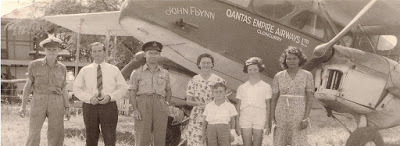
This second period also marked Flynn's recognition of the role the two-way radio was to play in the socialization of people in remote areas as they developed a community that is 'heard' but rarely seen. Later he gained Adelaide Miethke's support for the establishment of the Alice Springs Aerial Medical Service: on a visit, she recognized the potential the 'flying doctor' network offered for a 'school of the air' which she later inaugurated. In Sydney on 7 May 1932 Flynn, aged 51, married his devoted secretary, Jean Blanch Baird. 'Thus for the last nineteen years of his life' wrote Scott McPheat, 'the man who championed homelife in two-thirds of Australia himself enjoyed the “glow of a fireside”'.
The final phase of his work began with his merging his A.I.M. Aerial Medical Service into a national community service having resources far greater than any Church could provide. Flynn's dealings with members of State and Commonwealth parliaments now made him a representative for the scattered settlers in two-thirds of Australia for whom he had become the advocate for an adequate aerial medical service. He had made his first move in 1931 but the Depression not only kept the matter from the agenda of the premiers' conference that year, but, without Flynn's indefatigable publicity, it would have put his flying doctor out of the air.
By 1933 he judged the time opportune and made his major overtures through W. Forgan Smith, Queensland's premier. At the same time he maintained a flow of correspondence with key State and Federal parliamentarians. In 1933 the premiers resolved that 'this Conference approves a general co-operation of the Governments of the Commonwealth and States with a view to furthering the Australian Aerial Medical Service'.
Flynn still needed the approval of his Church whose General Assembly was meeting later that year. In a letter to his friend and confidant J. Andrew Barber, he revealed something of what this move was costing him personally, yet knowing that he and the Church could act in no other way to be true to the A.I.M.'s vision, 'For Christ and the Continent'.
If we do not become a national body the A.I.M. will be in danger of losing revenue … I mean we must either shrink back into a mere preaching agency, or, as a dynamic partner in a national enterprise to help the frontier people, we establish ourselves as a power greater than when we had the isolated areas to ourselves … If the Assembly baulks at the hurdle and refuses to invite everybody interested to join the A.M.S. adventure, I believe the A.I.M. will shrivel into a selfish little runt … I repeat my fears, that our colleagues do not realise that our conditions are being completely changed.
Flynn's arguments inspired his Church assembly and he won the day on his terms. That year he was appointed O.B.E.
Much of his time was now spent in setting up the State sections of the National Aerial Medical Service of Australia. (The name was changed in 1942 to the Flying Doctor Service of Australia and the designation of 'Royal' was added in 1954). Flynn's concept of the structure of the N.A.M.S. demonstrated his concern for community partnership through a series of State sections and local committees 'unified by their common Articles of Association' which he described as 'Multiple Heads—one Heart'. Throughout Australia he addressed public meetings, and held press interviews and consultations until the N.A.M.S. became a reality with the constitution that he envisaged.
In 1939 Flynn was elected to the three-year term as moderator-general of the Presbyterian Church of Australia. In 1940 and 1941 the degrees of D.D. were conferred on him by the University of Toronto and the Presbyterian College at McGill University, Montreal, Canada. The war and post-war period inhibited any new work until his closing years when the Old Timers' homes in Alice Springs, and Warrawee, the Far North children's holiday and health scheme in Adelaide, were established.
Survived by his wife, Flynn died of cancer in Sydney on 5 May 1951 and his ashes, at his request, expressed through his widow, were interred at the foot of Mt Gillen, Alice Springs. At this service his senior padre, Kingsley Partridge, said, 'Across the lonely places of the land he planted kindness, and from the hearts of those who call those places home, he gathered love'. In 1956 the John Flynn Memorial Church was opened in Alice Springs.
Flynn enjoyed a remarkable range of friendships and from them his fertile imagination drew concepts that enriched people and places. His letters reveal his dry sense of humour and irony, but above all his compassion. He was an inveterate talker, holding listeners far into the night, but he was also a good listener. His ecumenicity was shown by his being one of the founders of the United Church in North Australia. He accepted a specific charter and refused to be side-tracked into other areas of his concern, believing that a given task must recieve total commitment.
The same standard was expected from those who served in the A.I.M. with him. When he said 'A man is his friends', he expressed something akin to Martin Buber's philosophy that 'All real living is in meeting'. His meeting with other people often revealed a compulsive humanism which gave meaning to his own life as an ordained minister of his Church and to the faith by which he lived and served.

Clancy's comment: A true pioneer, and the R.F.D.S is still going today.
I'm ...


Published on February 01, 2017 12:15



